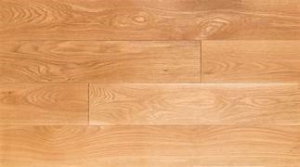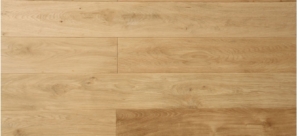When it comes to selecting the perfect wood for your construction or woodworking project, the type of oak you choose can make a significant difference. White oak is a popular choice known for its strength, durability, and stunning appearance. In this article, we’ll delve into the differences between three prominent types of white oak: American, European, and Mongolian.
Below is a chart comparing the technical data of the 3 species of oak provided by The Wood Database, a great source for detailed information on the majority of known wood species.
| Quercus alba | Quercus robur | Quercus mongolica | |
| Common Name(s) | American White Oak | English Oak, European Oak | Japanese Oak, Mongolian Oak |
| Origin/Distribution | Eastern U.S. | Most of Europe, to Asia Minor, and North Africa | Japan and eastern Asia |
| Tree Size (Height) | 65-85 ft (20-25 m) | 80-115 ft (24-35 m) | 65-100 ft (20-30 m) |
| Tree Size (Trunk Diameter) | 3-4 ft (1-1.2 m) | 3-5 ft (1-1.5 m) | 2-3 ft (0.6-1 m) |
| Avg. Dried Weight | 47.0 lbs/ft3 (755 kg/m3) | 42 lbs/ft3 (675 kg/m3) | 43 lbs/ft3 (680 kg/m3) |
| Specific Gravity (Basic, 12% MC) | 0.6, 0.75 | 0.53, 0.67 | 0.64, 0.68 |
| Janka Hardness | 1,350 lbf (5,990 N) | 1,120 lbf (4,980 N) | 1,200 lbf (5,320 N)* |
| Modulus of Rupture | 14,830 lbf/in2 (102.3 MPa) | 14,100 lbf/in2 (97.1 MPa) | No data available |
| Elastic Modulus | 1,762,000 lbf/in2 (12.15 GPa) | 1,544,000 lbf/in2 (10.60 GPa) | 1,525,000 lbf/in2 (10.51 GPa) |
| Crushing Strength | 7,370 lbf/in2 (50.8 MPa) | 6,720 lbf/in2 (46.3 MPa) | 8,290 lbf/in2 (57.2 MPa) |
| Shrinkage (Radial, Tangential, Volumetric, T/R Ratio) | 5.6%, 10.5%, 16.3%, 1.9 | 4.7%, 8.4%, 13.0%, 1.8 | No data available |
*Estimated hardness based on specific gravity
American White Oak (Quercus alba)

Appearance
American White Oak, scientifically known as Quercus Alba, boasts a beautiful light to medium brown color with a straight grain pattern. It often features a subtle array of ray flecks that give it a unique character. The grain is typically straight, with a coarse, uneven texture. In comparison to the other species of oak discussed, American White Oak has the lowest tannin levels, which makes it less desirable when using reactive stains or fuming the wood to achieve the desired color. Its appearance makes it a favorite for high-end furniture and cabinetry.
Durability
American White Oak is renowned for its exceptional durability. It is highly resistant to decay and rot, making it an excellent choice for outdoor applications such as boat building and exterior trim. Its strength also makes it suitable for flooring and furniture that will withstand years of use.
Distribution
American White Oak is abundant and readily available in the United States, making it a cost-effective option for domestic projects. Its availability extends to various thicknesses and cuts, providing flexibility in design. It is the cheapest white oak in comparison with the other 2 discussed in this blog post, although thicker and wider boards can be more expensive due the restrictive harvesting rules for the more mature, larger trees. This wood is not listed in the CITES Appendices, and is reported by the IUCN as being a species of least concern.
Common Uses/Applications
American White Oak is commonly used for flooring, cabinetry, furniture, and even wine barrels. Its versatility and durability make it a top choice for many woodworking projects.
European Oak (Quercus robur)

English Oak falls into the white oak group, and shares many of the same traits as White Oak (Quercus alba).
One of the most famous English Oak trees, The Major Oak, is a massive tree located in Sherwood Forest, in Nottinghamshire, England. The tree is estimated to be approximately 1,000 years old, and is purported to have been a common hideout for Robin Hood and his outlaws.
Appearance
European White Oak, or Quercus Robur, showcases a similar color spectrum to its American counterpart. However, European White Oak may have a more prominent grain pattern and larger ray flecks. This distinct appearance makes it a preferred choice for flooring and interior applications. European Oak has the highest Tannin Acid volume in comparison to the other oaks, which makes it the best option if you are going to chemically treat the wood, either with a reactive stain or by fuming/smoking the wood. By using a reactive stain or fuming/smoking the wood, the resulting color of the wood will be throughout the entire piece of wood.
Durability
European White Oak is similarly durable, capable of withstanding the test of time. Its resistance to decay and insects makes it an excellent choice for exterior uses. However, it is more commonly found in interior applications due to its availability in Europe.
Distribution
European White Oak is primarily found in Europe, which can limit its availability and increase the cost in other regions. However, it is still accessible for those who seek its unique qualities, despite the more restrictive requirements enforced by the European Union for harvesting these type of trees. This wood species is not listed in the CITES Appendices, and is reported by the IUCN as being a species of least concern. Wider, longer, thicker European Oak boards are more available than in other oak variants. Mostly due to the size the trees can grow to and European foresters being more selective in their harvesting methods, which allows more trees to grow to larger sizes.
Common Uses/Applications
European White Oak is popular for flooring, paneling, and high-end furniture. Its distinctive appearance lends itself well to elegant interiors, and its durability makes it a good choice for boatbuilding and whiskey/wine barrels. European White Oak is quite a versatile wood option.
Mongolian Oak (Quercus mongolica)

Appearance
Mongolian White Oak, also known as Quercus Mongolica, distinguishes itself with a paler color palette, ranging from pale beige to light brown. Its grain pattern is typically straight and uniform, making it an excellent option for contemporary designs and lighter interiors. Mongolian Oak is reported to have a larger percentage of sapwood and a smaller heartwood section, with lighter overall color than the other White Oaks discussed. This is a result of the colder climate and increased proportion of earlywood growth
Durability
Mongolian White Oak falls in the same category of durability as its American and European counterparts, but since it tends to have a wider proportion of sapwood, it is more vulnerable to insect attacks and wood decay. Its unique appearance often makes it a popular choice for interior design.
Distribution
Mongolian White Oak is not as widely available as the other commonly used oaks. This wood species is in CITES Appendix III, but is not on the IUCN Red List.
Common Uses/Applications
Mongolian White Oak is not as commonly used as the other oaks, primarily due to its CITES listing. Although, when it is used, it is used in furniture, decorative veneers, and other projects that do not require large amounts of lumber. Its lighter color and unique grain patterns make it a standout choice for high-end interior design applications.
In conclusion, the choice between American, European, and Mongolian White Oak ultimately depends on your specific project needs and design preferences. Each variety offers distinct appearances, durability, and availability, allowing you to select the perfect oak for your next endeavor. Remember to consider your budget, location, and the intended application when making your decision, and you’ll be well on your way to crafting something truly remarkable with these remarkable woods.
Through our blog we aim to provide high-quality content on interested topics related to construction, design, and the different building material options available. If there is something that interests you that we have not talked about in a blog, please let us know below!
